Working with International Partners
on health management operations on the ISS.
Health management operations for astronauts are largely categorized in three periods: before, during, and after spaceflight. The team performs necessary tasks to keep astronauts healthy during each of these periods. Particularly, in the case of in-flight health management operations on the ISS, which is an international collaborative project of five partner space agencies (CSA, ESA, FSA, JAXA, and NASA), medical operations teams of these agencies work closely together to carry out operations in an integrated fashion.

on the day of returning to earth ©JAXA/NASA/Bill Ingalls
Pre-flight health management operations
Health management operations for astronauts begin with astronaut selection. Astronauts must undergo years of training on earth before they are assigned to a flight. During that period, they are expected to stay in excellent health to be able to perform space missions. Astronauts undergo medical tests every year. The JAXA and ISS medical certification boards review those test results and certify astronauts’ medical eligibility for spaceflight. The annual assessment on astronauts’ physical performance is conducted to give individual guidance on exercises. Other pre-flight tasks include selecting Japanese space foods and daily necessities, and engaging in the process for transporting them to space.
Health management operations during training
Astronaut training on earth include extravehicular activity training in the enormous pool at the Neutral Buoyancy Laboratory (NBL) at NASA’s Johnson Space Center, training using a centrifuge, NASA Extreme Environment Mission Operations (NEEMO) conducted for a long-duration under the sea, and survival training. Because these training activities have elevated risk, the flight surgeon accompanies the astronaut to ensure the astronauts’ health and safety.

Health management operations between mission assignment and launch

Once an astronaut is assigned to a specific mission, the pre-launch health management operations schedule is developed. Astronauts who will stay on the International Space Station (ISS) for a month or longer must participate in on-orbit medical operations training according to the Medical Operations Requirements.
Starting one year before launch, astronauts undergo medical testing and other procedures as required by the Medical Operations Requirements. Health management operations such as tests and examinations by the flight surgeon are conducted until launch day. Prior to launch, astronauts are quarantined. The crew members live together in the dedicated lodgings and are only allowed to interact with the adults who have passed the health check, and not with children who have higher likelihood to be the sources of infection.
In-flight health management operations
Health management operations for astronauts in flight are remotely conducted primarily by JAXA’s designated flight surgeon at NASA's Mission Control Center in Houston (MCC-H) and by the medical management team at Tsukuba Space Center.
Astronauts who will stay on the ISS for a month or longer must undergo various medical tests before, during, and after spaceflight as stipulated by the Medical Operations Requirement. The team comprehensively manages the health of astronauts on the ISS using these medical data, which includes medical interviews, examinations, and tests, in addition to the physical performance, nutrition, and mental health of each astronaut, environmental monitoring results such as the status of the life support system, the radiation environment on the ISS and of individual astronauts, and the environment inside the ISS itself.

Equipment used for medical operations on orbit

Medical tests on the ISS are performed using the medical operations equipment installed in the ISS such as blood and urine sampling kits, ECG machines, blood pressure cuffs, and diagnostic ultrasound systems. These are collectively referred to as the Crew Health Care System (CHeCS/IMS).
Health management operations equipment in the IMS
- Health Maintenance System (HMS):
Collective term for medical instruments and emergency medical kits for use on orbit - Environmental Health System (EHS):
Collective term for various monitoring systems for water, air and microbes, and the radiation monitoring system - Countermeasures System (CMS):
Collective term for equipment such as treadmills, ergometers, and resistance exercise equipment
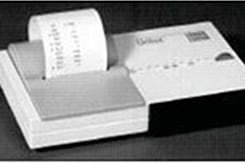
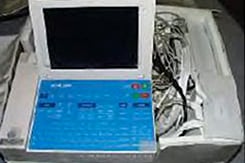
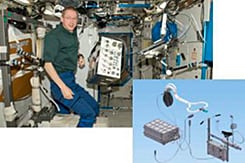
The Crew Medical Officer: the astronaut in charge of medical operations
The Crew Medical Officer, the astronaut in charge of medical operations, performs medical testing on astronauts in orbit.
Besides conducting medical testing, the Crew Medical Officer treats any astronaut who becomes ill or injured on orbit using medicine and medical instruments available in the ISS while following the advice of the flight surgeons back on earth. The ISS is equipped with intravenous drip infusion, intubation, eye washing kits, and basic surgery kits, but to this date no major medical incident that would require such equipment other than the eye washing kit has occurred.
The Crew Medical Officer continues regular training in emergency medicine while on orbit to maintain medical knowledge and skills in order to be prepared in case an astronaut becomes injured or suddenly ill. In this training, one of the astronauts plays the role of the injured or ill person, and the Crew Medical Officer simulates the necessary medical procedures to treat that injury or illness.

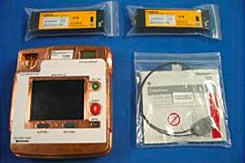
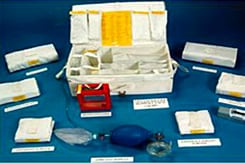
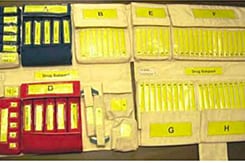








Post-flight health management operations
When astronauts go on long-term missions lasting around six months, their bodies undergo various physiological changes including reduced resistance of muscles against gravity and loss of bone mass. Due to these changes, they cannot return to normal life right away. Therefore, astronauts returning from a long space mission undergo a systematic, specially designed post-flight rehabilitation program of about 45 days to restore their body to its pre-flight condition. Their physical function, physical performance, and health are also checked as they undergo the program.

©JAXA/NASA/GCTC/Andrey Shelepin
Psychophysiological support after returning to earth

during a welcome ceremony at Karaganda Airport in Kazakhstan ©JAXA/NASA/Bill Ingalls
Health management operations that support astronauts’ mental health are also important for long space missions. Once an astronaut is assigned to a mission, they must leave their family behind and travel to many different countries for rigorous and time-consuming training. Even when they return to earth, their schedule is packed full with events such as post-flight briefings, VIP visits, and press conferences.
Some astronauts have their life philosophy and values change radically after experiencing spaceflight, and others get burnout syndrome, where they become despondent or depressed after accomplishing such a major goal.
In many cases, Japanese astronauts come into the public spotlight after returning home and their schedule becomes extremely demanding, possibly even more so than the mission itself. This is why controlling astronauts’ schedules after they return home is another important aspect of health management operations.
Rehabilitation after returning to earth
The typical rehabilitation program consists of three phases. Phase 1, which lasts until three days after return, focuses on massages, stretches, and assisted walking. In Phase 2, which lasts until two weeks after return, astronauts transition to doing various exercises such as underwater walking, pedaling on a cycle ergometer, and light walking. In Phase 3, they start running and doing more intensive strength training. After 45 days, astronauts are allowed to return to their normal life while their individual recovery is monitored.
Under the guidance from experts in NASA, JAXA have accumulated the knowledge by implementing to prepare for prescriptions on exercise and to provide with guidance on exercise to Japanese astronauts. The rehabilitation period of Astronaut Onishi’s after returning to the Earth allowed us realize the first rehabilitation in Japan.

Unless specified otherwise, rights to all images belong to ©JAXA



